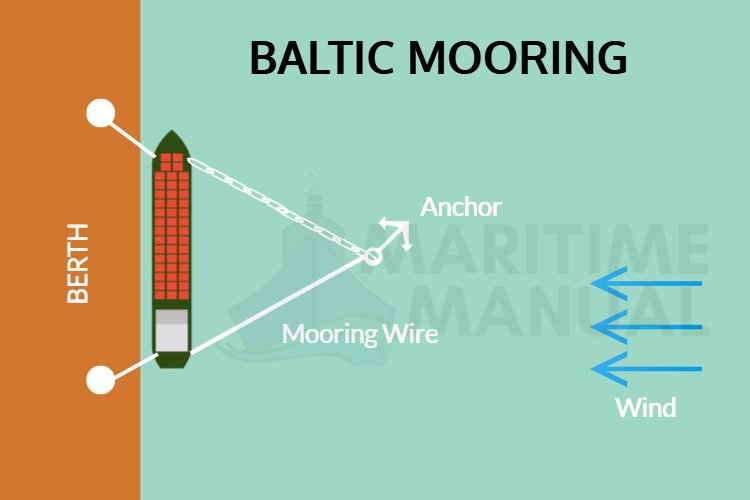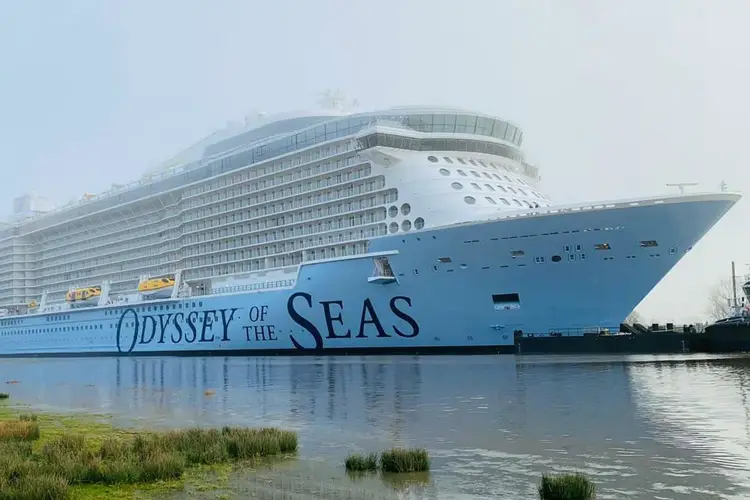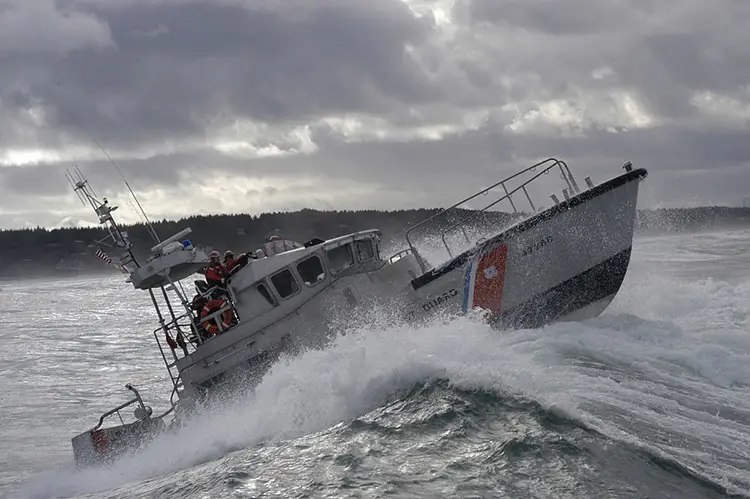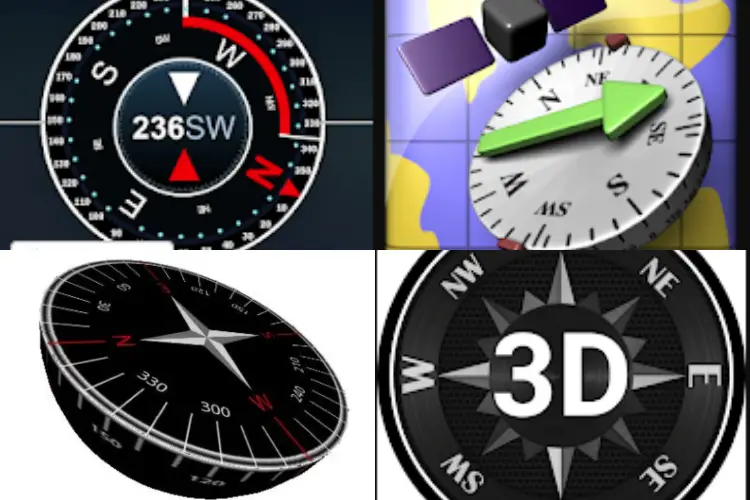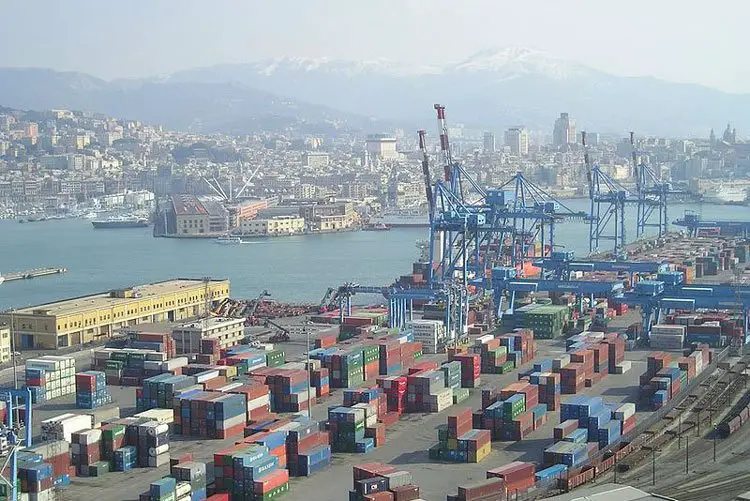8 Major Ports in Israel
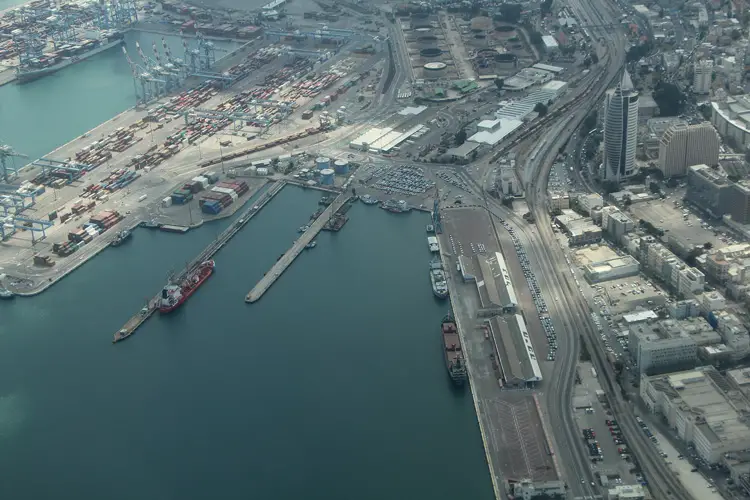
Israel or the State of Israel is a West Asian country bordered by Lebanon, Syria, Jordan, Egypt, Palestinian Territories, the Mediterranean Sea, and the Red Sea.
Considered one of the most advanced countries in West Asia and the Middle East, Israel’s major economic sectors include high-technology and industrial manufacturing.
Despite being a geopolitically insecure country, Israel has a high quality of education and living. Historically, the ports built on the Mediterranean Sea acted as a gateway for Christian, Muslim, and Jewish pilgrims from around the world to the Holy City.
In the 1900s, the ports scattered along the western border of Israel provided refuge to Holocaust survivors and other European Jewish people.
Today, these same ports are used to transport oil, natural gas, coal, petroleum, and other commercial goods to and from Israel. Let us take a look at some influential old and new ports in Israel.
Top Ports in Israel
| Sl. No. | Port Name | Location |
|---|---|---|
| 1) | Port of Haifa | Haifa |
| 2) | Old Jaffa Port | Jaffa |
| 3) | Port of Ashdod | Ashdod |
| 4) | Port of Akko | Acre |
| 5) | Port of Eilat | Eilat |
| 6) | Port of Tel Aviv | Tel Aviv |
| 7) | Port of Ashkelon | Ashkelon |
| 8) | Port of Hadera | Hadera |
1) Port of Haifa

The Port of Haifa is one of Israel’s three major international seaports and the largest port. At the beginning of the 20th century, the father of Political Zionism, Theodor Herzl realized the tremendous economic possibilities of a port in Haifa.
The port eventually finished construction in 1933 and was opened by Sir Arthur Wauchope, the British High Commissioner for Palestine.
After its construction, the Port of Haifa became a gateway for thousands of immigrants and Holocaust survivors to Israel after the Second World War.
Located in a natural, protected bay, Haifa Port consists of numerous terminals with a terminal capacity of 14,000 TEU and a large capacity for receiving passenger ships.
The Port of Haifa is operated by the Haifa Port Company, Ltd. and is owned by Adani Ports & SEZ, an Indian port operator and logistics company, and Gadot Group, an Israeli chemicals and logistics group.
The Port has a 17-lane truck gate facility for handling multiple cargo vehicles, along with a railroad freight terminal, a passenger terminal, a fishing wharf, a yacht club, grain silos, and a chemical terminal.
Israel Shipyards, a privately owned company, provides heavy ship repair facilities at Haifa. In 2018, the Israel Port Authority started construction on the first phase of a $1.1 billion expansion. The expansion will include the construction of a new terminal with a handling capacity of 15,000 TEUs per ship.
It also includes the expansion of the existing chemicals terminal, a new fuels terminal, an 880 meters expansion of the main breakwater, and the construction of a freight railway terminal to provide better connectivity to the Israel Shipyards facilities. The tender to operate the new terminal has been won by the Shanghai International Port Group.
2) Old Jaffa Port
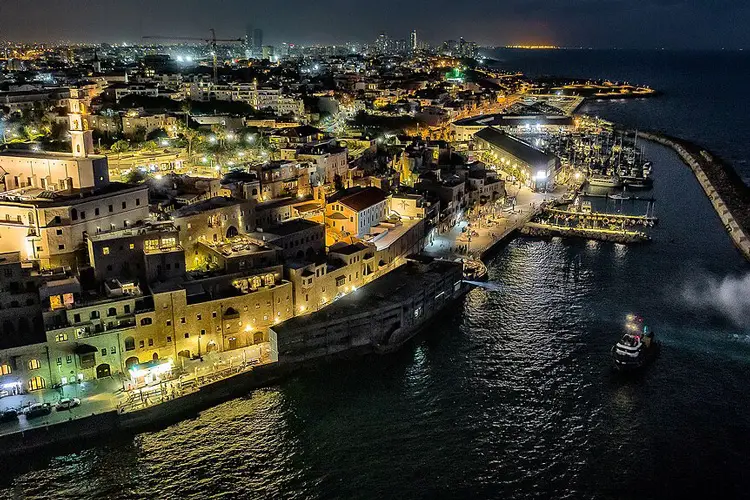
The Old Jaffa Port is situated in the beautiful sea town of Jaffa at the southwestern end of Tel Aviv. Considered one of the world’s oldest ports and the location for the Biblical story of Jonah and the Whale, the Jaffa Port was an important port in the Eastern Mediterranean until the construction of new ports in Ashdod and Haifa.
Today it is used largely by local fishermen and is a tourist destination. In its heyday, the port was the main point of sea entry to Israel and welcomed thousands of migrants, traders, and pilgrims.
3) Port of Ashdod
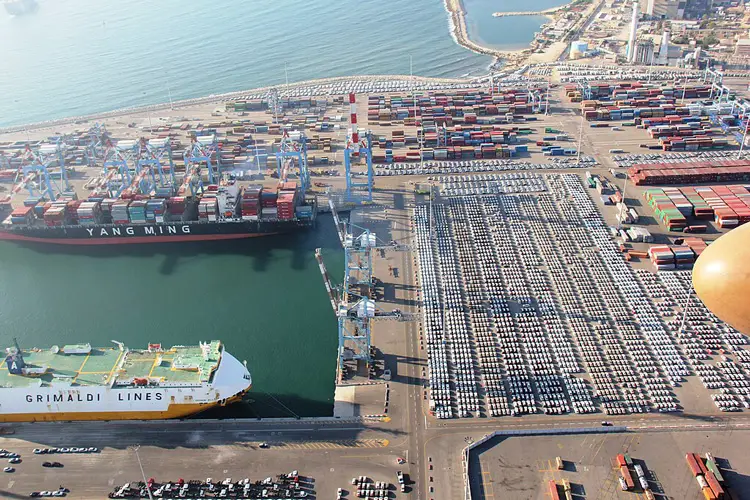
Of Israel’s top 3 main cargo ports, the Port of Ashdod was established in 1965 to increase the country’s port capacity. The port is situated approximately 40 kilometers south of Tel Aviv near the Lachish River in Ashdod.
The Port of Ashdod is not only considered the economic gateway to the State of Israel but it is also the main port for unloading humanitarian aid for the Gaza Strip.
In the late 1950s, the need to build another deep water port in Israel arrived after the expansion of existing ports like Haifa and Eilat could no longer handle the increasing volume of export and import cargoes.
The Port of Ashdod was built because it was closer to the newly established urban centers in the southern part of Israel.
It also shortened the transport of cargo to the southern and central parts of the country considerably and was situated close to existing transportation arteries and industrial and commercial centers of the world.
At the time of its establishment, the construction of Ashdod port was considered an engineering marvel, making it one of the only few deep water ports built around the world on the open sea.
As of 2021, Ashdod port handles approximately 24 million tonnes of cargo. In 2005, the port was expanded with the inauguration of Eitan Port, a fully computerized container port.
Eitan Port is one of the most advanced ports in the world with a Terminal Operating system that costs at least $6 million.
This $6 million TOS has an electronic message system, provides loading and unloading management, and helps operate the container’s storage areas.
The Port provides its customers with an array of services like loading, unloading, and storage of cargos, citrus fruit and agricultural produce warehouses, grain silos, container repair and cleaner services, along with cold storage.
There have been some reports which suggest the construction of a rail terminal at Eitan Port to grant easier access to surrounding industrial centers. In 2015 it was also reported that the Israel Ports Authority wished to expand the port with the construction of a $900 million Southern Terminal.
The Southern Terminal will consist of a 1.5-kilometer breakwater, a new container terminal with an 800m main quay and a 500m secondary quay, and an on-site freight rail terminal. There are also plans to build additional cargo storage and logistical support areas, new access roads connecting to national highways, and electrical and communications networks.
Also read: Major Ports in Algeria
4) Port of Akko
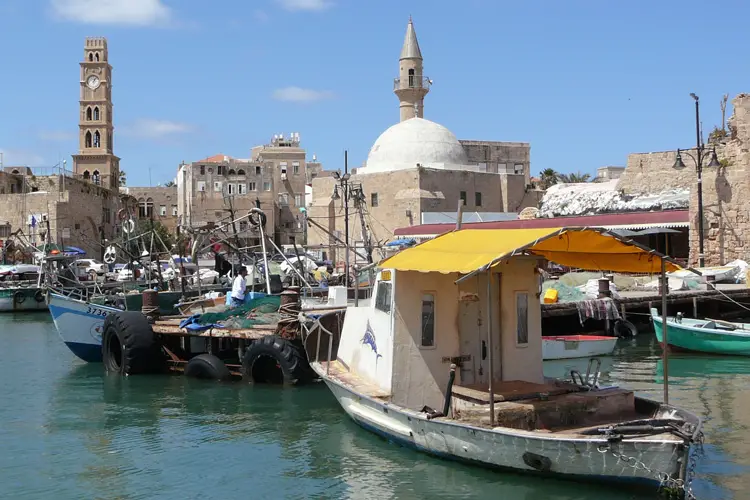
Acre or Akko Post is situated in one of the oldest cities in Israel. The Port was built on Israel’s Mediterranean coast, with the earliest mentions of the Port being made between 527 to 525 BC during Cambyses’ journey to conquer Egypt. For centuries the Port of Akko served as a connection between Europe and the Holy Land.
At the height of its popularity, the port was visited by hundreds of ships that brought along soldiers, supplies, and horses to the Levant. Many historians believe that Julius Caesar visited Akko Post on his journey to the east.
In the 19th century, Akko Port was developed by the Ottoman Empire and was badly destroyed by the British during a battle against the Ottoman governor, Al-Jazzar.
When the British took control of Palestine, they closed Akko Port but after the creation of Israel, the port was revived with a new breakwater in 1965, and by 1982, the port became a marina. Today, Akko Port is a popular tourist destination and continues to be used for fishing.
5) Port of Eilat
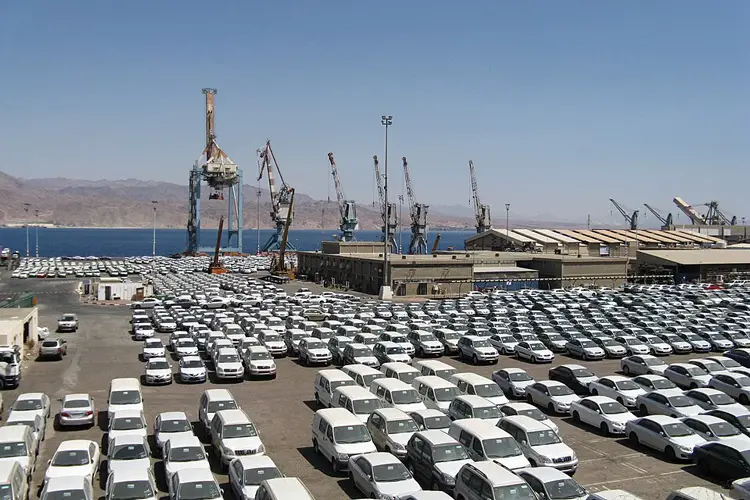
Owned by the Government of Israel and operated by the Israel Port Authority, the Port of Eilat has been in operation since the 1950s. The only Israeli Port built on the Red Sea, the Port of Eilat is situated on the Gulf of Aqaba and is used for trading with Far East countries without sailing through the Suez Canal.
Although considered a large seaport, the Port of Eilat witnesses less ship traffic than other major seaports in Israel, largely due to not having proper connectivity with a freight railway line and being far from the center of the country.
The government has proposed a development plan which entails relocating the current port to an excavated area north of the city which will be reachable by a canal built alongside the Jordanian border.
It also includes the construction of a new airport and an extension of the railway. The Eilat Port Authority has also spent millions to build a loader that will stop phosphate dust from dispersing into the sea.
The Port of Eilat has the following port handling equipment- dockside cranes, mobile cranes, container gantries, and reach stackers.
Also read: Top Ports in Italy
6) Port of Tel Aviv
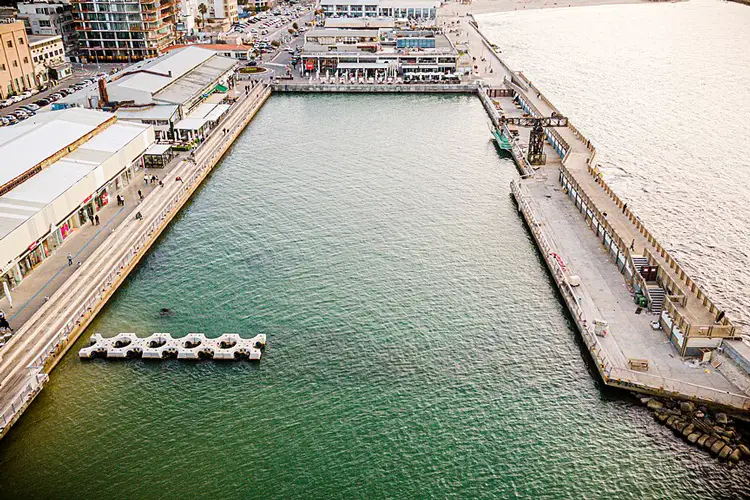
Located in central north Tel Aviv, the Port of Tel Aviv was built in the 1930s in the wake of the 1936-1939 Arab revolt. During the Second World War, the British Navy took over the operations of the port. While some attempts were made to revitalize the port after the war, these were largely unsuccessful due to less trading in the wake of the war.
At the time of the 1948 Arab-Israeli War, the Israeli forces used the Tel Aviv port to import equipment and weapons. The port was officially closed down by the government in 1965 and was used as a shopping place for textiles and plumbing supplies for local traders during the day and by drug addicts and prostitutes at night.
The Marine Trust Company, which owns the Port of Tel Aviv hired architect Orna Angel to revamp the port and attract shop owners. In 2003, the government organized an open competition for designing the landscaping around the building. This led to the construction of a new boardwalk that continues to attract millions of visitors annually.
The old ship hangers were also transformed into an entertainment hub with restaurants, boutiques, meeting rooms, and art galleries. Currently known as Namal Tel Aviv, the Tel Aviv port comprises a wooden deck lined with beach chairs to enjoy the beautiful sunset, along with a spiritual landscape for worshippers to worship next to the sea.
7) Port of Ashkelon
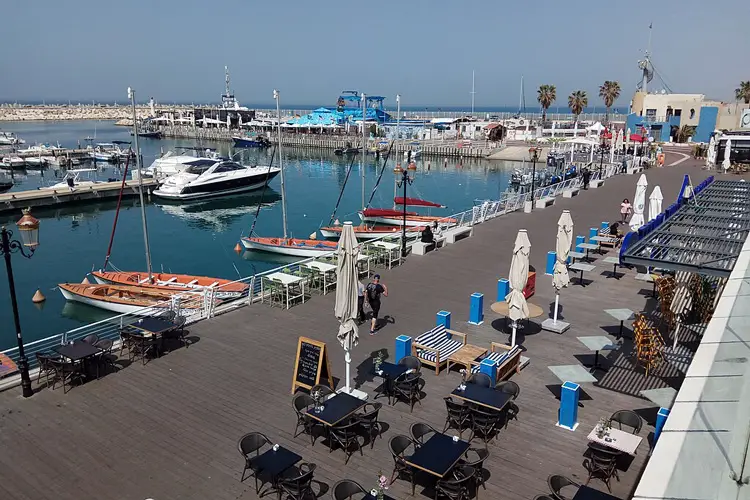
The Port of Ashkelon or the Ashkelon Oil Terminal is operated by the Europe Asia Pipeline Company and is located in the town of Ashkelon, south of Ashdod. The port mainly deals in the transportation of petroleum products and its derivatives. Built to receive at least 1000 ships every year, the port comprises CBM berths that handle fuel oil, white products, and gasoline.
The berths can accommodate tankers that weigh at least 80,000 DWT. The port has a well-equipped hospital and takes the utmost care while handling cargo in order to avoid oil spills by regularly checking the scuppers at the main deck level and encouraging carriers to drain accumulated water on deck periodically.
In October 2023, in the wake of the rising tensions between the Israeli forces and Hamas, the Port of Ashkelon announced that it would be closing its terminal. Chevron, a US energy company announced that in compliance with the Israeli Government, it has ceased production at the Tamar natural gas field. The Ports of Haifa and Ashdod are still operational.
8) Port of Hadera
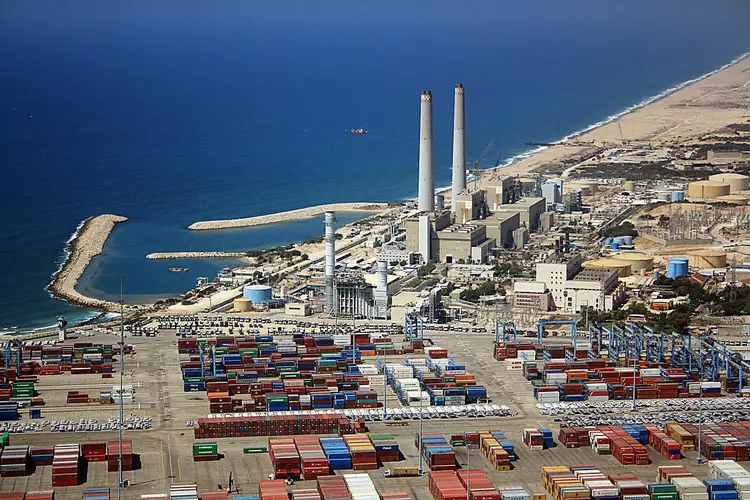
Located in the middle of the cities of Tel Aviv and Haifa, the Port of Haidera is a medium-sized port that mainly deals in the export and import of coal and oil. The port is built strategically close to two power stations in the city of Hadera. Every year, the port of Hadera handles at least 7 million tonnes of cargo.
The Port of Hadera provides several facilities to efficiently trade in oil and coal. For instance, there are warehouses to store dry bulk coal and ore, a coal berth with a conveyor system and two gantry cranes, and an oil jetty with a CBM oil berth. The oil jetty is 2200 m.
Israel Port Authority
Israel Port Authority is a government agency located in Tel Aviv that manages and supervises the operation of Haifa, Ashdod, and Eilat seaports. Set up in 1961, the Israel Port Authority was known as the Israel Ports and Railway Authority. But by 2002, the railway and port authority were separated to form a new state company, Israel Railways.
Israel Port Authority is governed by a Government-appointed council with 17 members, 7 government ministers, and 10 public representatives. For several years, the Director of the Israel Ports Authority was former Mossad chief Meir Dagan. The authority is meant to operate as a government corporation that acts as a litigant in legal proceedings, is responsible for all undertakings, and is a party to all contracts.
Other responsibilities include the development, construction, planning, maintenance, management, and operation of the ports. Under the Ports Authority Law 5721-1961 it is stipulated that the Israel Port Authority is to operate the ports as a commercially viable enterprise but one which requires government approval in matters of development budgets and change in tariffs, among others.
To increase the competition between seaports Ashdod, in the late 2010s, the government set to increase the capacity holding of the two ports by creating a $2 billion investment program to construct bigger shipping terminals.
In 2021, the Israeli government announced a bid for private companies to operate the newly developed terminals for a period of 25 years. Terminal Investment Limited, a Switzerland-based company won the tender to operate the Southern Terminal in Ashdod port whereas the tender to operate the Bay Terminal in Haifa was won by Shanghai International Port Group.
Israel Ports Development and Assets Co. Ltd.
The Israel Ports Development and Assets Co. Ltd. also known as the Israel Ports Company is a governmental port community system established in 2005. This company was established with the aim of improving Israel’s maritime trade process. The Israel Ports Company was established under the supervision of the Ministry of Transport.
Responsible for the development of Israel’s biggest commercial seaports in Haifa, Ashdod, and Eilat, the Israel Ports Development & Assets Company aims to provide the necessary infrastructure to ensure that the ports operate efficiently and can handle Israel’s international maritime trade.
The company also controls Israel’s port property and manages the allocation of government assets for the facilitation of Israel’s international maritime commerce. The IPC also has the responsibility to facilitate economic growth by putting pressure on the State to invest in the development of modern, competitive, and efficient ports.

